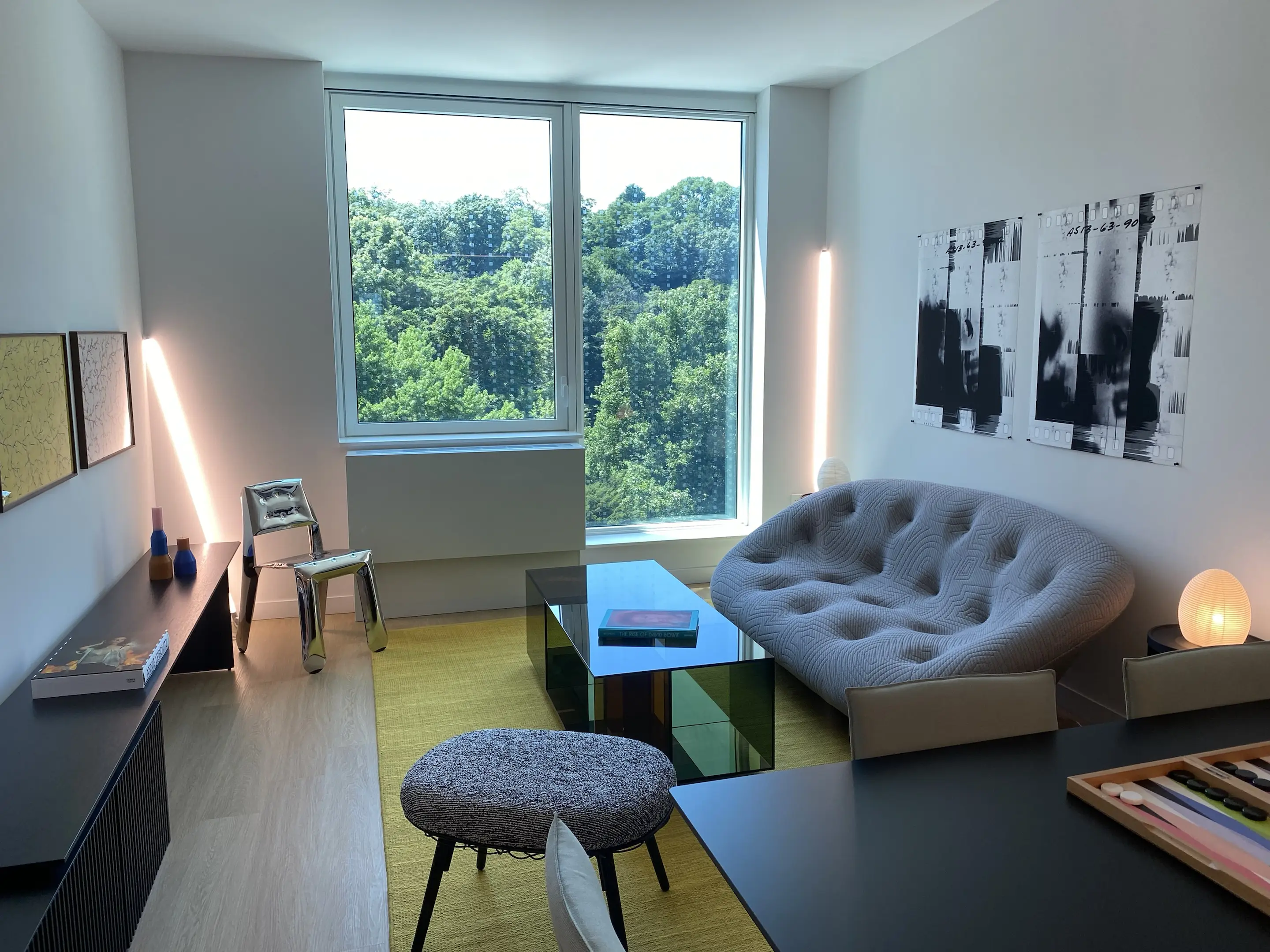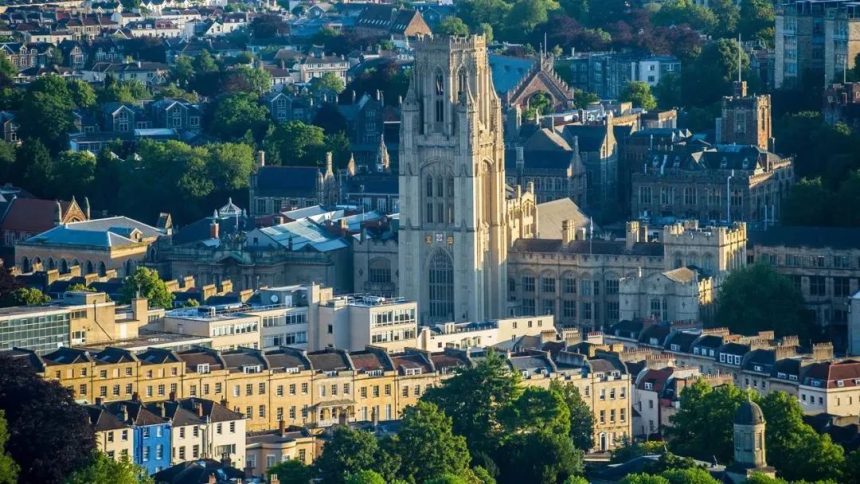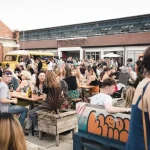Bristol, the largest city in the South West of England, is the second city to appear on the British Isles in history and is the city with the most significant number of traditional English buildings, the oldest harbour, and the most historical artefacts and legends. The city’s history dates back more than 1,000 years. Today, it is a major centre for high technology, finance, import and export trade, communications and aviation in the South West of England. Bristol City is 120 miles west of London and can be reached in 90 minutes by train or two hours by car. Bristol also has a world-renowned university, the University of Bristol.
About the University of Bristol
University Resources
The University of Bristol has a dedicated Career Development Centre, where students can seek advice on career paths and CV revisions in the career service.
In addition, students can join Bristol Connects, which organises regular alum gatherings, lectures and awards dinners, where they can network with alums, learn more about different careers and get industry information.
In addition to career service, the University of Bristol also has volunteer activities. There is a Bristol Plus Award; students can apply for it on the university’s official website, and they can get the award by completing a specific time limit of volunteer activities or internships, as well as related workshop lectures and pieces of training.
In addition, the University of Bristol has the IKEEP online internship programme, which provides free online training in the business sector. Upon completion of the training, you will be interviewed for an internship, which will be in the marketing department of a variety of industries, and you will receive an award of £450 and a certificate at the end of the internship.

Semester Setting
A one-year course of study in the UK is usually divided into three semesters. The first Autumn term is usually September-December, after which there is a 15-20 day holiday. The second semester, Spring term, is from January to March, followed by a 20-day Easter holiday. The Summer term, marking our third semester, unfolds from April to June. This period is dedicated to various final exams that will test your knowledge and growth throughout the year. As we move towards the end of this semester, a generous span of over two months awaits you. This time is meant for you to prepare and polish your thesis meticulously.
Clubs Activities
There are many student activities at Bristol University, with over 400 societies, all of which can be found on the Bristol SU website. Students will receive weekly emails inviting them to participate in various activities, including sports, craft workshops, city trips and environmental activities.
Why choose the University of Bristol
1. Invention of Ribena
Ribena, a British soft drink, was invented in 1936 at the University of Bristol by scientist Dr Vernon Charley as a blackcurrant added to milk. Initially regarded as a health drink, it was distributed free to children and pregnant women in World War II as an essential source of vitamin C supplementation.
2. Students’ Union
The Richmond Building, home to the Bristol Students’ Union, is located on Queens Road and is the country’s most extensive purpose-built students’ union building, with the equivalent floor space of nearly four standard football pitches.
3. Gender Equality
In 1876, the University of Bristol was the first higher education institution to admit female students based on gender equality.

4. Sir Winston Churchill
In addition to being one of the most outstanding wartime leaders of the twentieth century, Mr Churchill was Chancellor of the University of Bristol from 1929 until he died in 1965. Naughty students have officially been carrying him on their shoulders through the streets to the Victoria Rooms since he took office in 1929. They usually hold interesting mock trials after catching him. The tradition continues until today, with new students participating every year.
5. Bristol Opens its Doors
University College Bristol officially opened at 32 Park Row on 10th October 1876, with only two professors and seven lecturers. Only two professors and seven lecturers taught at the university, with a fee of 7 shillings for each course. There were 30 male and 69 female students enrolled in 15 specialities.
6. Student Newspapers
The Epigram was an innovative student newspaper that broke new ground in Europe with its online distribution platform. Making history, it became the first UK student newspaper to embrace colour printing. Moreover, its foundation traces back to James Randall, who now plays a significant role as the Deputy Political Editor of the BBC.
7. Dipped Biscuits
BU scientists discovered the perfect technique for dipping biscuits in 1998. Dr Len Fisher, leader of the research team, used an investigation to find out that the ideal way to dip a biscuit should be to rotate it 180 degrees clockwise.

8. Wills Memorial Building
In a testament to tradition and resilience, the Wills Memorial Building holds the distinct honour of being the last building in the UK constructed with the support of wooden scaffolding. The massive wooden structure at the top of Park Street has been a unique attraction for many years. It still stands to this day, and people continue to visit it. The 68-metre-high building was opened in 1925 by King George V and Queen Mary.
9. Garden Grotto
The Garden Grotto is not only a favourite place for students to visit, but it is also one of the best surviving eighteenth-century garden caves in the UK, lined with rare and exotic animal carapaces from all over the world. The builders devoted 27 years, from 1737 to 1764, to complete this architectural marvel.
10. Theatre Academy
Bristol was the first University to open a dedicated drama school in 1946. Many famous people have studied theatre, television and film at the University of Bristol.
11. Harold Pinter Nobel Prize Winner
Playwright Harold Pinter staged his first play, The Room, in May 1957 at the University of Bristol’s School of Drama.
12. Dorothy Hodgkin
Dorothy Hodgkin, Chancellor of the University of Bristol from 1971 to 1988, was the first British woman to win the Nobel Prize for Science. She is still the only woman to have won the prize.

13. Silent Laboratory
The Centre for Nanoscience and Quantum Information on Tyndall Avenue has the quietest laboratory in the world. The £11 million laboratory is one of the best in the world today. So, despite being in the centre of Bristol, it is subjected to the lowest possible vibration and noise levels. So, researchers at BU are happy to be completely free from outside distractions.
14. Cantock Steps
The Cannock Steps houses two sculptures, nicknamed Peter and Paul. We owe the names of these steps to none other than Nobel Prize winners Peter Higgs and Paul Dirac. Many refer to them as the “indecision steps”. This is due to their improper spacing, which causes delays at each stage. Visitors find themselves spending more time than necessary on these steps.
15. Sandwich Courses
Bristol was the first University to introduce what came to be known as the ‘sandwich course’ – a combination of academic study and industry placements.
16. Supercomputers
The University has the UK’s fastest and most advanced supercomputer facility, which can do over 200 trillion calculations in seconds.
17. Moon Dust
During man’s first lunar landing, Neil Armstrong and Buzz Aldrin collected samples of moon dust from the moon’s surface. These samples were analyzed at the University of Bristol for signs of life. When the samples arrived at the University of Bristol in October 1969, the team opened them up to the public, with queues forming outside the University for hundreds of metres down Park Street.
18. Victoria Rooms
The Victoria Rooms is a well-known student club. It has a rich history with famous figures like Dickens and Oscar Wilde. They have both hosted readings at this club in the past. In May 1842, the iconic building first welcomed the public, marking its rise as the most significant and vibrant cultural centre in the West of England. With a rich history that speaks volumes, it was gifted to the University of Bristol in 1920. It Includes two gymnasiums, a refectory, lounges, and a games room, fostering an environment of growth, camaraderie, and learning.
19. Rare Collection of Books: The University’s library
With 1.4 million printed books and journals, it is the most extensive academic collection in the South West. The Special Collections Library alone has three kilometres of shelves of rare books and manuscripts.
20. The First Mobile Phone
The University of Bristol’s research into mobile communications technology and systems led to the invention of the first mobile phone.

Conclusion
Not only is the University of Bristol an academic powerhouse, but you can also find many exciting things to do when you study there.
Zombie Walk! In a thrilling twist, zombies might suddenly spring up around a corner somewhere on campus, surprising you. At least 1,000 zombies disguised as living people appear en masse in Bristol’s Stokes Croft to Castle Park area. They would lurk around a corner, jump out and scream, terrifying passers-by with their bloody faces, and then laugh in their stomachs at those who fled in terror.
At Bristol, students can enjoy a beautiful and peaceful environment. The Suspension Bridge, located just outside the school, offers stunning views that provide unforgettable memories for students.
Lying on the grass in College Green between classes, sunbathing or pretending to read is also a popular pastime for Bristol students.
At the University of Bristol, you can gain knowledge and youth, sweat and passion, and perhaps. In your spare time, you can even meet the British Prime Minister at Nando’s on Park Street for lunch to prove that you are worthy of the trip.
FAQ
Is the University of Bristol hard to get into?
Gaining admission to the University of Bristol can indeed be challenging, considering its competitive nature. Based on various sources, the acceptance rate fluctuates between 20% and 68%.
Cost of living at the University of Bristol
The cost of living in Bristol largely depends on one’s lifestyle, but on average, it is approximately £800 per month, excluding tuition fees. This monthly cost includes an estimated £500 for accommodation, £78 for food, and around £100 for transportation. Tuition fees range from £10,000 to £35,000 annually for undergraduate and postgraduate programs. The living cost for a year is estimated to be no less than £19,600.
What is the average rent for student accommodation at the University of Bristol?
Student accommodation prices at the University of Bristol will depend on a range of different factors, the most important being location. The accommodation price can range from £145/week to £288/week. On average, you can expect to spend £237/week for a decent room. Apart from the location, the rent also depends on the various amenities and facilities provided by the accommodation and the room’s configuration. The accommodation rent will decrease as you move further from the City Centre.







